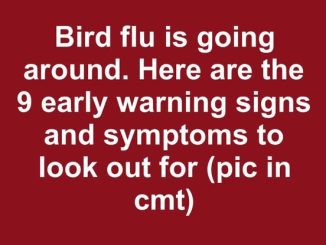Lobster is the crown jewel of seafood dining—luxurious, delicate, and oh-so-satisfying. But beneath the butter-drenched claws and Instagram-worthy tails lies a controversial component that sparks fierce debate at dinner tables and seafood boils alike: the tomalley.
If you’ve ever hosted a lobster dinner only to realize someone didn’t clean it properly—leaving that greenish gunk in the body cavity—you’ll know exactly how awkward and unappetizing it can get. That was exactly my experience when my neighbor proudly brought over whole lobsters… shells, tomalley, and all. Needless to say, my guests and I couldn’t eat it—and that moment raised a very real question: Isn’t cleaning lobster non-negotiable?
Let’s break this down, one shell at a time.
Understanding the Anatomy: What Even Is Tomalley?

You’ve cracked open the lobster, expecting tender meat, but instead, you’re met with a green mush. That’s tomalley.
Technically speaking, tomalley is the lobster’s liver and pancreas combined. It acts as the crustacean’s internal filter system, absorbing and processing waste. Think of it like a sponge that’s been soaking up oceanic residue. Tasty, right?
To some, it’s a delicacy. To others, it’s an instant appetite-killer. Whether you consider it rich and flavorful or straight-up off-putting, understanding what tomalley does in a lobster’s body makes a huge difference in deciding whether you should eat it—or toss it.
Why Proper Lobster Cleaning Isn’t Optional
Here’s the truth: cleaning a lobster isn’t just about being fancy—it’s about being safe and respectful.
Let’s be real—no one wants to bite into gills, intestines, or liver sludge. That’s not gourmet, it’s just gross. Cleaning ensures you remove not only tomalley but also:
- The digestive tract (also known as the sand vein—yum)
- The gills
- Any unappetizing, inedible parts
Whether you’re grilling, steaming, or poaching, a clean lobster leads to better flavor, better texture, and better peace of mind. It’s like prepping a steak—you wouldn’t serve it with the fat cap and sinew still attached, would you?
Video : Gordon Ramsay | How to Extract ALL the Meat from a Lobster
Health Concerns: Is Tomalley Actually Dangerous?
The answer? It can be.
Because tomalley functions as a filtration system, it’s the part most likely to accumulate environmental toxins like heavy metals, pollutants, and in some cases, paralytic shellfish poison (PSP). During red tide seasons, health authorities like the FDA have explicitly warned against eating tomalley due to potential contamination from harmful algal blooms.
In small, occasional amounts, it probably won’t hurt you. But regular consumption? That’s a different story—especially if you’re sourcing lobster from questionable waters.
So if your seafood motto is “better safe than sorry,” tomalley is better left off the plate.
Cultural Clashes: Tomalley as a Delicacy or Dealbreaker?
Not everyone recoils at the sight of tomalley.
In some cultures and coastal communities, it’s considered a culinary gem. People mix it into sauces, spread it on toast, or even blend it into lobster bisque for an extra hit of briny flavor. Some chefs swear by its umami intensity and rich texture.
But here’s the catch: context matters.
If your guests are expecting clean lobster meat and they’re served full-body crustaceans with organs intact, don’t be surprised if the reactions range from polite confusion to visible horror. Knowing your audience is key. What’s gourmet in one kitchen is off-limits in another.
How to Clean Lobster the Right Way (Without the Drama)

If you’re going to serve lobster—especially to guests—do it right. Here’s a quick crash course:
- Boil it first – Cook the lobster for about 8–10 minutes per pound. This makes the shell easier to work with and loosens internal parts.
- Crack the claws and tail – Use lobster crackers or the back of a heavy knife.
- Remove the tail meat – Slice the tail open and pull out the meat, removing the dark vein running down its center.
- Open the body cavity – This is where you’ll find the tomalley, gills, and other inedible bits. Use a spoon to gently scoop them out and discard.
- Rinse it well – Give everything a gentle rinse under cold water to remove debris and residue.
If you’re feeling generous, serve the tomalley in a separate dish for those who actually want it—just don’t assume everyone will.
Common Mistakes That Ruin a Lobster Dish
Lobster is too expensive to mess up, yet many people still commit these rookie errors:
- Overcooking – Lobster turns tough and rubbery fast. Watch the timer!
- Not cleaning properly – Leaving digestive parts intact is a no-go unless you’re eating alone in a bunker.
- Skipping the rinse – Even small bits of tomalley or shell fragments can make the dish unappetizing.
- Serving without cracking tools – Nothing kills lobster joy like a table full of guests struggling with their food like it’s a medieval torture device.
Avoid these mistakes and your lobster night will go from meh to memorable.
The Tomalley Debate: To Eat or Not to Eat?
There’s no universal rule, but here’s the deal:
If you love the flavor and you’re aware of the risks—go for it (in moderation). If the idea grosses you out or you’re feeding a crowd, clean it out and play it safe.
Video : How to Clean a Lobster (Restaurant Style)
It’s not about being right or wrong. It’s about respecting the dish and the people eating it.
Conclusion: Clean It Like You Mean It
When it comes to lobster, cleaning isn’t just a preference—it’s a culinary courtesy. Whether you’re cooking for friends, family, or just yourself, taking those extra steps ensures safety, flavor, and a much better dining experience.
So yes, my neighbor’s tomalley-filled lobsters may have derailed dinner that night—but let it be a lesson to us all. Clean your lobster. Respect the tomalley. Know your audience.
Because when in doubt, it’s always better to remove the green goo than to lose your guests.


